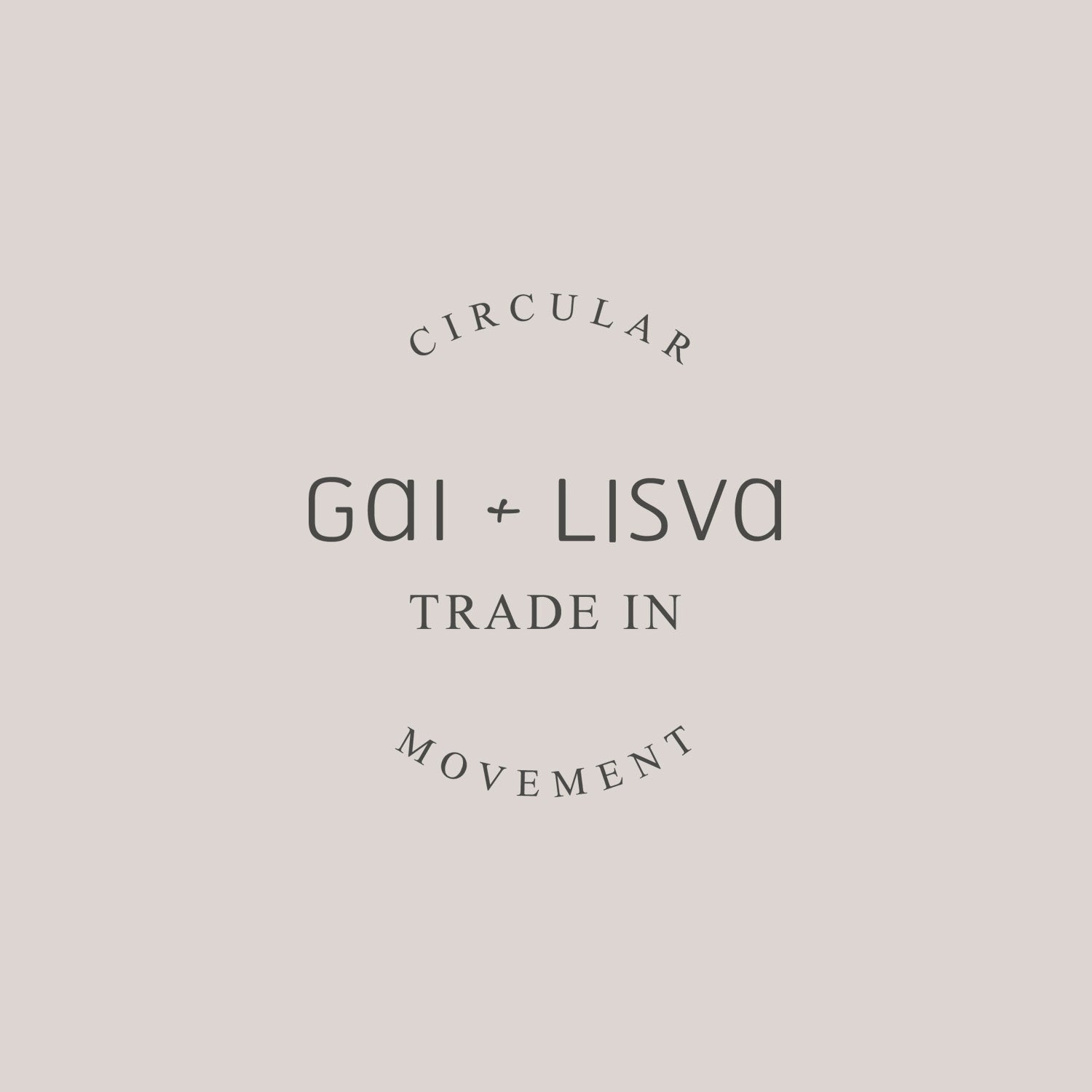Reduzieren • Reparatur • Wiederverwenden • Wiederverkauf
PFLEGEANLEITUNG

Jede Produktion von Kleidung beeinflusst unsere Umwelt und Ressourcen. Es erfordert Zeit und gründliche Überlegung, um Modelle zu schaffen, die unseren Planeten so wenig wie möglich belasten. Stile, die über viele Jahre hinweg Bestand haben und auf Veränderung ausgelegt sind.
Der Anbau von Rohmaterialien und die Herstellung von Textilien haben großen Einfluss auf lokale Ökosysteme und das Klima. Deshalb streben wir danach, langlebige Naturfasern und Materialien mit möglichst geringer Umweltbelastung zu verwenden. Wir arbeiten stetig daran, den Einsatz von kunststoffbasierten Fasern zu verringern und durch zertifizierte Naturfasern zu ersetzen. Der Kauf und die Nutzung von Kleidung sollte eine kreisende Bewegung sein, die die Lebensdauer des Kleidungsstücks verlängert.
Reduzieren: Reduziere Deinen Konsum und kaufe weniger, dafür Kleidung von besserer Qualität.
Reparatur: Repariere deine Kleidung selbst oder lasse sie von einem Profi reparieren. Nützliche Hilfsmittel zur Pflege deiner Kleidung sind ein Fusselentferner und eine Fusselrolle.
Wiederverwenden: Kaufe gebrauchte Kleidung oder spende bzw. verkaufe Kleidung, die du nicht mehr trägst.
Wierderverkauf: Um sicherzustellen, dass unsere Designs eine möglichst lange Lebensdauer haben, auf der du die GAI+LISVA-designs abgeben kannst, die du nicht mehr nutzt. So können andere Deine Kleidung schätzen und ihre Lebensdauer verlängern.
Indem wir uns auf diese vier Punkte konzentrieren, möchten wir zu einem verantwortungsvolleren Umgang mit dem Konsum von Kleidung beitragen und so einen minimalen ökologischen Fußabdruck hinterlassen.
EINE VERANTWORTUNGSBEWUSSTE INVESTITION
Kleidung sollte eine nachhaltige und verantwortungsvolle Investition sein. Deshalb fertigen wir Kleidung von hoher Qualität, die unabhängig von Jahreszeiten und Trends immer wieder getragen werden kann. Durch die richtige Pflege deiner Kleidung verlängerst du deren Lebensdauer, vermeidest unnötigen Verschleiß und kannst sie viele Jahre lang genießen.
Damit du deine Kleidung gut pflegen kannst, haben wir diesen Pflegeleitfaden zusammengestellt.
Waschen
Es ist wichtig, dass du deine Kleidung richtig und entsprechend dem Material wäschst, damit sie lange hält. Folge immer den Anweisungen auf dem Waschetikett, das am Kleidungsstück angebracht ist.
Um die Umwelt zu schonen und den Ressourcenverbrauch zu minimieren, empfehlen wir, seltener zu waschen und die Temperatur zu reduzieren. Wir empfehlen zudem ein Schonprogramm bei maximal 30 Grad oder eine kühle Handwäsche in der Waschmaschine mit niedriger Schleuderdrehzahl.
Verwende Waschmittel mit anerkannten Umweltzertifikaten, die zu deiner Kleidung passen, und füge keinen Weichspüler hinzu. Weichspüler sind schwer abbaubar und dienen nur dazu, statische Elektrizität in synthetischer Kleidung zu reduzieren, die Kleidung weicher zu machen und Duft hinzuzufügen. Dosier die richtige Menge Waschmittel, abgestimmt auf die Wäschemenge und die Wasserhärte – eine Überdosierung führt nicht zu sauberer Wäsche.
Bei empfindlichen Materialien wie Seide empfehlen wir die Verwendung eines Wäschesacks. Wasche Kleidung separat von Kleidung mit Knöpfen, Reißverschlüssen und Ähnlichem. Lass deine Kleidung draußen lufttrocknen, anstatt sie im Trockner oder drinnen zu trocknen, wo dies das Raumklima beeinträchtigen kann. Du kannst eine Wäsche oder zwei auslassen, indem du deine Kleidung einfach draußen lüftest, besonders bei Wolle, da sie sich selbst reinigt.
Wenn du deine Kleidung von Hand wäschst, ist es wichtig, dass die Temperatur nicht zu hoch ist, da sie sonst einlaufen und verzogen werden könnte. Du solltest deine Kleidung auch nicht stark auswringen oder im Trockner trocknen.
Drücke überschüssiges Wasser vorsichtig aus dem Kleidungsstück, forme es vorsichtig zurück und lege es zum Trocknen auf eine flache Oberfläche.

PFLEGETIPPS
Es ist wichtig, dass du deine Kleidung je nach Material richtig wäschst. Folge immer den Anweisungen auf dem Waschetikett, das am Kleidungsstück angebracht ist.
Sieh dir in der folgenden Anleitung an, wie du unsere Designs waschen kannst.
PFLEGE & REPARATUR

Pflege und Reparatur
Wenn deine Kleidung kaputt geht, empfehlen wir, sie selbst zu reparieren oder von einem Schneider reparieren zu lassen. Die Reparatur deiner Kleidung ist eine viel bessere Lösung, als sie wegzuwerfen.
Falls du deine Kleidung individuell anpassen möchtest, kann ein Schneider dir ebenfalls weiterhelfen.
PILLING
Kleidung kann nach einiger Zeit anfangen zu pillen, doch es ist leicht, sie wieder schön aussehen zu lassen. Kaufe einen Fusselentferner und eine Fusselrolle. Die Fusselrolle entfernt lose Fusseln, während der Fusselentferner sanft die losen Fasern abschneidet.
Lege die Kleidung auf eine flache Oberfläche und führe den Fusselentferner vorsichtig in eine Richtung über die Kleidung. Drücke nicht zu fest, denn das könnte die Fasern beschädigen.
GAI+LISVA SECONDHAND
GAI+LISVA SECONDHAND
Minimiere deinen Fußabdruck.
Unsere Secondhand-Plattform ermöglicht es dir, GAI+LISVA-Styles abzugeben, die du nicht mehr trägst. Andere können Freude an der Kleidung haben, und ihre Lebensdauer wird erheblich verlängert. Wenn du GAI+LISVA-Designs abgibst, erhältst du einen Gutschein von bis zu 35 %, den du in unserem Webshop einlösen kannst. Du kannst dort auch Kleidung kaufen, die andere abgegeben haben.
Durch die Nutzung unserer Secondhand Plattform trägst du zu einem zirkulären Konsum bei.
REICHE DEINE GAI+LISVA-STYLES EIN















